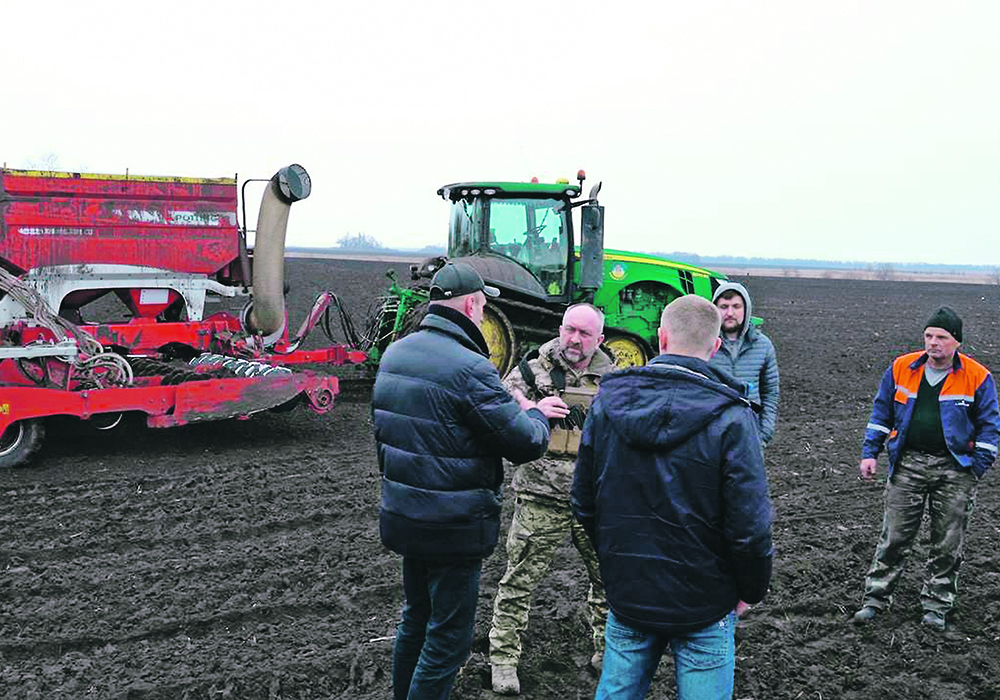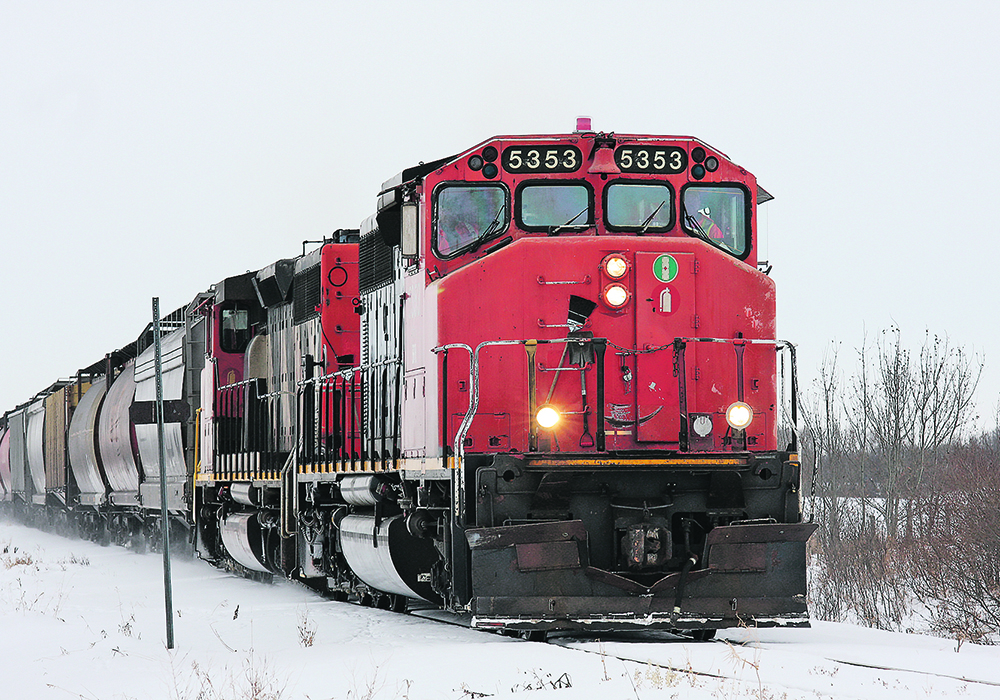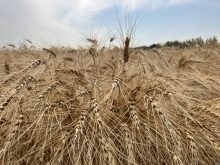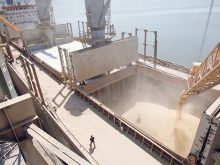Producers return to their fields as soon as a region is liberated, knowing the world needs all the food they can grow
In early April, Ukrainian soldiers expelled Russian invaders from the northern regions of Ukraine: Kyiv, Chernihiv and Sumy regions.
The wounded enemy left, leaving behind burned-out war machines and the unburied corpses of soldiers. However, the invaders managed to do a lot of damage. Many of you are probably aware of the atrocities uncovered after their departure. Farmers were also affected.
At the same time, hostilities continue in the territory of six more regions of Ukraine. Wherever the Ukrainian army enters, the houses of rural residents are on fire. Farms and granaries are destroyed. At the same time, agricultural machinery is either taken to Russia or destroyed on the spot. Hundreds of Ukrainian farmers have lost their tractors and seeders.
It should be said that in Ukraine, now is the optimal time for sowing crops. In principle, corn and sunflower can be sown until the beginning of June to get a more or less normal yield. However, right now every day of lost time is very expensive so farmers from the liberated regions immediately try to sow grain. This is their only chance to save the finances of their companies and also pay their employees’ wages.
It is necessary to focus on the fact that the lives of millions of people in Africa and Asia depend on whether farmers in the affected regions have time to sow grain. In these territories, according to the most minimal estimates, from 10 to 15 million tons of grain are grown every year. This is mainly wheat, barley, corn, sunflower, soybeans and rapeseed, 70 percent of which are typically exported.
If Ukrainian farmers fail to sow grain on time, famine could result in many other countries.
I know dozens of farmers from those regions who have suffered from the fighting. With some I am on closer terms, with others I only spoke once or twice. Usually these are open, friendly people who immediately answer the phone. But this time everything was different. Even farmers whom I managed to get through to are depressed.
However, they do not sit idly by. It is hard for them to talk about their losses, but they do not cry, but work energetically. Almost all of them are in the field now, trying to save the season.
Mykola, a farmer from the Chernihiv region, said he considered himself lucky. The occupiers only stole 500 litres of fuel, damaged his fertilizer warehouse and took away his truck. He’s still able to seed his crop.
“But it was not easy to start the sowing campaign because sappers (bomb disposal experts) first had to work in the fields,” he told me.
Now Mikola needs to sow about 1,000 acres. Previously, he planned to sow corn and sunflowers but because of war, plans have changed. He now will plant more peas, wheat and also 50 to 75 acres of buckwheat.
“These are food crops that Ukrainians will need,” he says. “Who knows what will happen next? People should be provided with food.”
His colleagues from the Agromol company in the Kharkiv region were much less fortunate. Russian soldiers shelled a dairy farm, which killed dozens of animals.
I don’t want to paint these horrors anymore. This is an everyday reality. And if the villagers of northern Ukraine, liberated by the Ukrainian army, can now begin a peaceful life, then in the south and east, the atrocities of the invaders continue.
A few years ago, I met farmer Sergii from the Kherson region in southern Ukraine. He’s well known in the country for his ability to grow four tonnes per hectare of rapeseed in an area with moisture levels similar to the Sahara desert. He’s widely acknowledged as an expert and many have come to study his techniques.
Now they are relaying his call for help in Ukraine. Four villages, on the territory in which his fields are located, are completely blockaded by the invaders. People have no medicines, food or fuel and cannot go anywhere. They sit, in fear, waiting for a shell or rocket to fly into their house.
In Melitopol, in southeastern Ukraine, more than US$1 million worth of John Deere and Vaderstadt equipment was stolen from a warehouse. Thanks to GPS beacons, it was possible to establish that it was taken to Russia, and more precisely to Chechnya, which is controlled by Putin’s vassal Kadyrov.
There are many such stories in Ukraine now. During the month and a half of war, we’ve developed a sense of emotional stability. This is when a person realizes that he has no other option than to fight the enemy and work. Vasil, a farmer from the Kyiv region, is no exception.
“What will I do next? I will sow,” he told me. “Yes, there are mines in the fields, no fuel, no spare parts, almost nothing. But I will work. I have always been good to the land and it has never let me down. Won’t let me down this time.
“I have 200 tenants, 60 employees. They all look at me because they no longer have any opportunity to earn. I will do everything for us to survive.”
What territory in Ukraine will be sown in 2022? In March, experts predicted crops would be sown on 70 percent of the pre-war area. However, after counterattacks by the Ukrainian army, now they are talking about 80 percent of the usual sown area.
The usual sowing campaign will be impossible in the southern and eastern regions, although individual farmers do not pay attention to the danger and will sow grain.
It should be said that the territory of Ukraine in agrarian terms is clearly divided into zones. In the west of the country, where there is a lot of rain, as well as in the north and in the centre, all types of crops are grown.
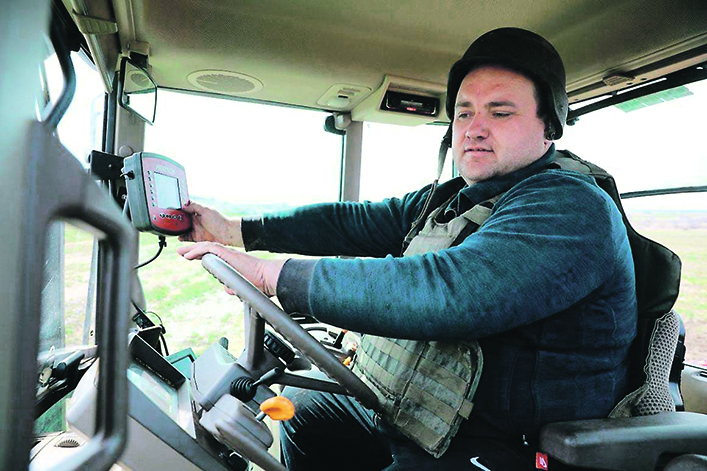
The southern and eastern regions are very dry and, without irrigation, only winter wheat and barley, as well as sunflowers, can be grown there, along with peas and flax. Irrigated fields grow everything, including vegetables, soybeans and even rice.
It is already possible to predict a shortage of wheat, barley and vegetable oils on the world market, most likely to manifest itself in the coming months. Indeed, in the south of Ukraine, wheat harvest begins at the end of June.
But what will happen next? It is very difficult to say now. I have no doubt that Ukraine will be able to provide itself with food. Even now, more than 20 million tons of unsold grain lie in the warehouses of our farmers. The weather conditions are still favourable and we will be able to grow a good harvest.
But how to export it, with our seaways blocked by the enemy?
Again, the answer here depends on the armed forces of Ukraine. Recently they managed to destroy a missile cruiser of the Russian Black Sea Fleet. Destruction of nine more large warships would free the sea lanes. If that sounds strange, I agree. But this is a new reality in which the world has been living since Feb. 24 and this must finally be understood by the entire civilized world.
Otherwise, a great famine will begin on the planet.
Ihor Pavliuk is a Ukrainian agricultural journalist.

